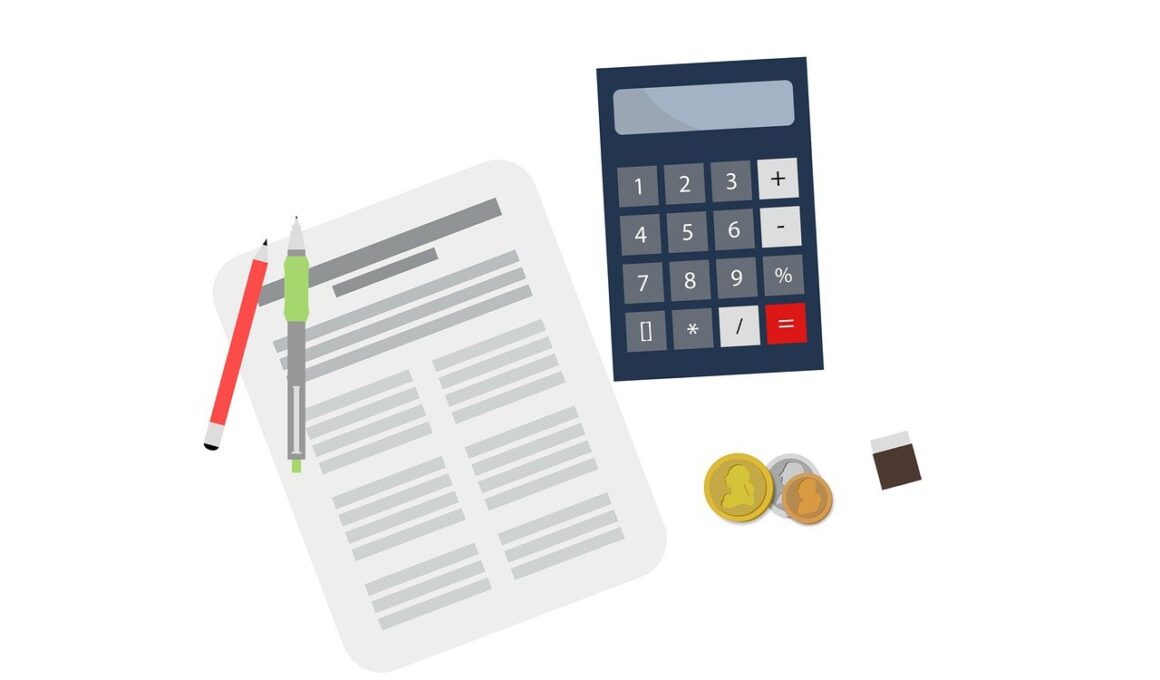Leveraging Technology to Enhance Expense Reporting Accuracy
In today’s rapidly evolving financial landscape, organizations are increasingly turning to technology to improve their expense reporting accuracy. Financial professionals face the challenge of accurately capturing and analyzing expenses, which directly impacts budgeting and forecasting. Traditional methods often lead to misreporting and inaccuracies, ultimately affecting overall financial health. By adopting modern technological solutions, companies can streamline their expense management processes. Automation tools are at the forefront of this transformation, enabling seamless data entry, reducing manual errors, and enhancing efficiency. Furthermore, analytics and reporting platforms provide real-time insights into spending trends, facilitating informed decision-making. The integration of machine learning algorithms further enhances this process by identifying patterns in spending and suggesting optimized budgets. Companies can distinguish between essential and non-essential expenditures, leading to informed financial strategies. This adaptability allows organizations to remain agile and competitive. As financial reporting continues to evolve, leveraging technology is not just an option; it’s a necessity for cultivating accuracy in expense reporting.
As organizations embrace digital transformation, many are adopting tools like expense management software to enhance their reporting accuracy. These solutions often include mobile applications that allow employees to submit their expenses on-the-go, ensuring that data is captured at the moment of spending. This immediacy reduces forgotten expenses and misclassification, leading to more accurate reconciliation at the end of the month. Additionally, cloud-based platforms enable real-time collaboration among finance teams, who can review and approve expenses as they occur, rather than waiting until the monthly cycle is complete. Integration with accounting systems means that expense reports can be automatically populated and categorized, streamlining the workflow significantly. Such technologies not only reduce the time spent on manual data entry but also improve visibility into spending behaviors across the organization. Companies can utilize dashboards and visual reporting features to monitor expense patterns and performance metrics. Ultimately, the transition to digital tools represents a commitment to continuous improvement in financial management practices and ensures that decision-makers have the accurate data they need to steer the business effectively.
The Role of Data Analytics
Data analytics plays a crucial role in enhancing expense reporting accuracy. By analyzing past expense reports, companies can identify trends and anomalies in spending. Business intelligence tools allow organizations to visualize data in a way that highlights irregularities, enabling proactive management of expenses. For example, suppose a particular department consistently exceeds its allocated budget. In that case, finance teams can investigate the root cause of this overage. These insights facilitate informed discussions about potential adjustments in budgeting or spending behaviors. Furthermore, predictive analytics also empowers businesses to forecast future expenses based on historical data. This allows organizations to allocate resources more effectively and avoid financial pitfalls. The accuracy of expense reporting benefits significantly from such data-driven approaches, as it provides a clear picture of organizational spending patterns. Each department can develop tailored strategies to optimize budgets, ensuring that spending aligns with financial goals. As companies continue to leverage analytics, they create a culture of accountability that further reinforces the importance of accurate expense reporting across all levels.
Moreover, adopting cloud-based expense management systems ensures enhanced accuracy in reporting by minimizing discrepancies associated with manual entries. These systems often include automated features such as expense policy enforcement, which prompts users to adhere to internal guidelines while submitting claims. For instance, if an employee attempts to submit an expense that exceeds policy limits, the system can automatically flag it for review. This real-time feedback enhances compliance and reduces the number of erroneous reports submitted for reimbursement. Additionally, features such as optical character recognition (OCR) technology can extract data from receipts swiftly and accurately. This technology ensures that all necessary information is captured and reduces the likelihood of human errors occurring during data transcription. As a result, finance departments can allocate their time resources more effectively, focusing on strategic analysis rather than processing mundane administrative tasks. Consequently, accurate and timely reporting becomes the norm rather than the exception, leading to stronger financial oversight within the organization. Overall, the integration of these technologies cultivates an environment conducive to precise expense tracking and management.
Training and Change Management
To fully harness the potential of technology in enhancing expense reporting accuracy, companies must prioritize training and change management. Even the most advanced tools will fall short if users are not comfortable navigating them. It is essential for organizations to invest in comprehensive training programs that educate employees about the functionality and benefits of the adopted systems. Furthermore, fostering a culture of openness regarding financial management can significantly enhance users’ willingness to engage with these tools. Employees should feel empowered to ask questions and seek assistance when needed. Change management strategies can help ease the transition to new systems by addressing potential resistance. When presenting new technology, organizations should emphasize the benefits of accurate and timely expense reports. By demonstrating how these improvements can positively impact individual roles and the organization as a whole, employees are more likely to embrace the change enthusiastically. Regular follow-ups and feedback sessions can reinforce the importance of expense accuracy, ensuring that employees remain engaged in the process and understand the impact of their contributions.
Lastly, organizations should continuously assess the effectiveness of their expense reporting systems to ensure they are getting the desired outcomes. Periodic reviews can help identify areas for improvement and adapt processes as needed to maintain accuracy and efficiency. Furthermore, analyzing employee feedback regarding user experiences can unveil insights into common challenges faced by users. With this information, finance teams can refine or upgrade existing systems to better meet organizational needs. In addition to addressing potential shortcomings, companies should also keep abreast of emerging technologies and trends in expense management. Staying informed about advancements in this area allows organizations to adopt best practices and maintain competitive advantages. Whether it’s integrating artificial intelligence for predictive analysis or utilizing blockchain for enhanced security and transparency, the future of expense reporting is promising. The convergence of technology and finance is not merely a trend, but a necessary evolution aimed at fostering precise financial oversight. Embracing this evolutionary path will ultimately help companies achieve their financial objectives more effectively.
In conclusion, leveraging technology to enhance expense reporting accuracy is essential for organizations aiming to thrive in today’s competitive landscape. By adopting advanced tools, facilitating training, analyzing data, and implementing continuous improvements, businesses can mitigate inaccuracies. The integration of these technologies paves the way for a more streamlined expense management process, empowering finance teams to make informed decisions. Moreover, as businesses strive for greater accountability and transparency, accurate expense tracking becomes a cornerstone of financial health. By remaining committed to technological enhancements, organizations ensure that their financial practices are sustainable and resilient. Financial teams will be equipped to provide accurate and timely reports, and ultimately, this leads to better strategic planning and resource allocation. The advantages of technology in expense management directly translate into bottom-line impacts, yielding increased efficiency. Therefore, companies should view technological investment not as an expense, but rather as a critical driver of future growth. As the landscape of financial reporting continues to change, organizations must stay agile and proactive, embracing technology to achieve financial excellence.
Future Directions in Expense Reporting
As we look to the future, the landscape of expense reporting is undoubtedly set to evolve further, with technology leading the charge. Innovations on the horizon include enhanced mobile capabilities, advanced analytics, and seamless integration with other business management software. For instance, as remote work becomes more prevalent, mobile apps will likely become the cornerstone of expense management solutions. Businesses can expect these applications to include features such as location tracking and blockchain integration for security purposes. Moreover, advancements in AI will simplify the expense reporting process, making it even quicker and more accurate. Predictive capabilities will help organizations anticipate expenses based on seasonality and historical data more effectively. This shift will allow finance departments to proactively manage budgets rather than reactively adjust after overspending occurs. Additionally, as businesses continue to integrate their systems, expense reporting will become a seamless part of the broader financial ecosystem. Companies can anticipate having a holistic view of their financial health and accountability measures that are transparent and robust. This holistic approach will lay the foundation for strategic decision-making and long-term financial sustainability.


